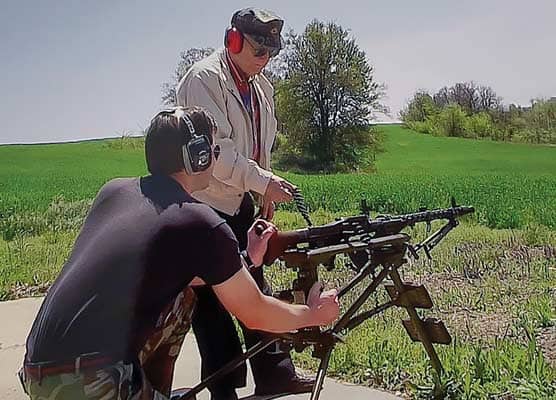Other Eyes
Practice Shooting From The Other Eye As Well As The Other Hand
In a recent article, one of our writers addressed the use of the eyes in regards to shooting with both eyes open and he advised we all should. An interested reader then inquired as to whether or not he should shoot off the weak shoulder with his strong eye or weak eyed or crossover. Having dealt with this on a regular basis, I thought to give some insight into what we find works and the why’s, as in why we care, why we should train to the task and why it might make a difference.
Although it sounds a bit edgy, have you ever been in a bar or the like and seen somebody sucker punched? As in our about-to-be-thumped dude was looking in one place and someone from another direction zaps him? The use of both eyes open helps eliminate the proverbial tactical sucker punch. Simply close one eye and see what part of the room or your environment you lose visual contact with.
The simple equation is two eyes open allows for more information to be gathered by the eyes — and remember this isn’t always for direct movement. The peripheral visual is one of the few places where true instincts are at play with guns, shooting and fighting as the peripheral vision picks up movement to which the shooter can shift his eyes directly to confirm potential threats and apply sighted fire according to need. Contrary to some beliefs, we can’t shoot instinctively, but we can in fact use instincts in the form of this “hunter’s eye” which catches or gathers movement if you will. You can then address it as needed.
The aforementioned reader inquiry used the terminology weak side, weak eye and weak shoulder. Without being contrary or judgmental, I do not use the term weak and prefer opposite or other. This could just be a play on words, but then many life issues evolve around a play on words.
I use opposite side terminology so as to not add any negative connotation in my mindset denoting my left hand or side might not hold up its end of the deal in a fight. This is mostly resolved by practice prior to the fight, and I strongly prefer not to “improvise, adapt and overcome” and would prefer people address and train to the potential problem before the fight starts. I am not too bright, but I believe the ability to acquire new skills in the middle of an ongoing fight will be limited at best. So I train up the opposite side now so if I ever need the skill I have it before the fight begins.
This is actually not a big deal, as many people are right handed and have a left master eye or vice versa. Probably the biggest eye problem could evolve around a new shooter who might be cross dominant and often sees two or more images. This is most common in handguns. In the use of a handgun, the new shooter may need to feather or shut down an eye until he acquires more skill or simply more exposure to shooting in general with the idea in mind he ultimately will shoot with both eyes open.
So subjects here to be addressed while shooting on the range could be these options.
Strong hand, strong eye.
Strong hand, opposite eye.
Opposite hand, strong eye.
Opposite hand, opposite eye.
All of the above using only one eye.
All of the above, both eyes open.
Rifles
This is a different can of worms than the handgun. If I hold the long gun right handed, right shouldered my left eye would not be allowed visual access because the stock gets in the way. In a case where the strong eye gets damaged or there has very poor eyesight, the issue actually affects long guns more dramatically than handguns as the only way of solving it is to switch shoulders which means switching hands and so on.
This approach, in all candor, is more for sport shooting or hunting and yet the fix requires the shooter to train up to the switch-sides-gig and the manipulations that go along with it. This crossover concept can and should be addressed for tactical applications because of the potential for injuries while fighting and yet should be addressed if for no other reason than the shooter can or could get access to a threat in what would be and otherwise impossible shot.
The Scenario
For example: I have a target hard to the right at a lower angle in a built up area and I need to mount the rifle left shouldered to simply get the muzzle parallel to the building I am in so as to get the sight on target. User beware issues here are to shoot these shots and positions in training prior to use to eliminate or make you aware of where your eye and head are in relationship to the ocular lens in a scoped rifle so as to not get a scope-eye cut.
During training I simply blend everything I can think of that could go wrong and address it. As examples a left eye, left shoulder mount while pressing the trigger with the right-hand finger or the reverse. All of this training should include training without corrective lenses if you wear them but be sure to wear clear eye protection any time you shoot. Here you are limited by only your imagination and willingness to work and acquire new skills and of course you should shoot all of these options with one eye, the other eye and then both eyes open to see what will work for you.
Shooting with both eyes open is not a new concept, yet I address it in every class I teach. The smart option is to shoot with both eyes open but not everyone can do it. A good way to approach it is to try all of the alternative methods now before you might need or want one. I think the line was, “A man’s gotta know his limitations” and I agree for both the boys and the girls. Let us find out now what works before we need to make it happen downrange for real.

Sign up for the Personal Defense newsletter here:





